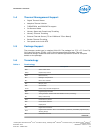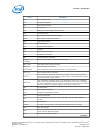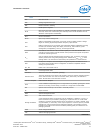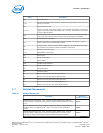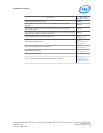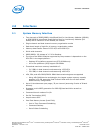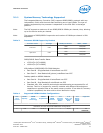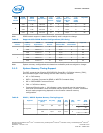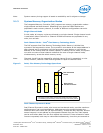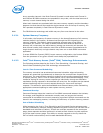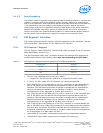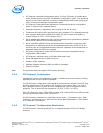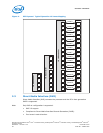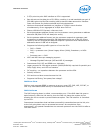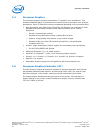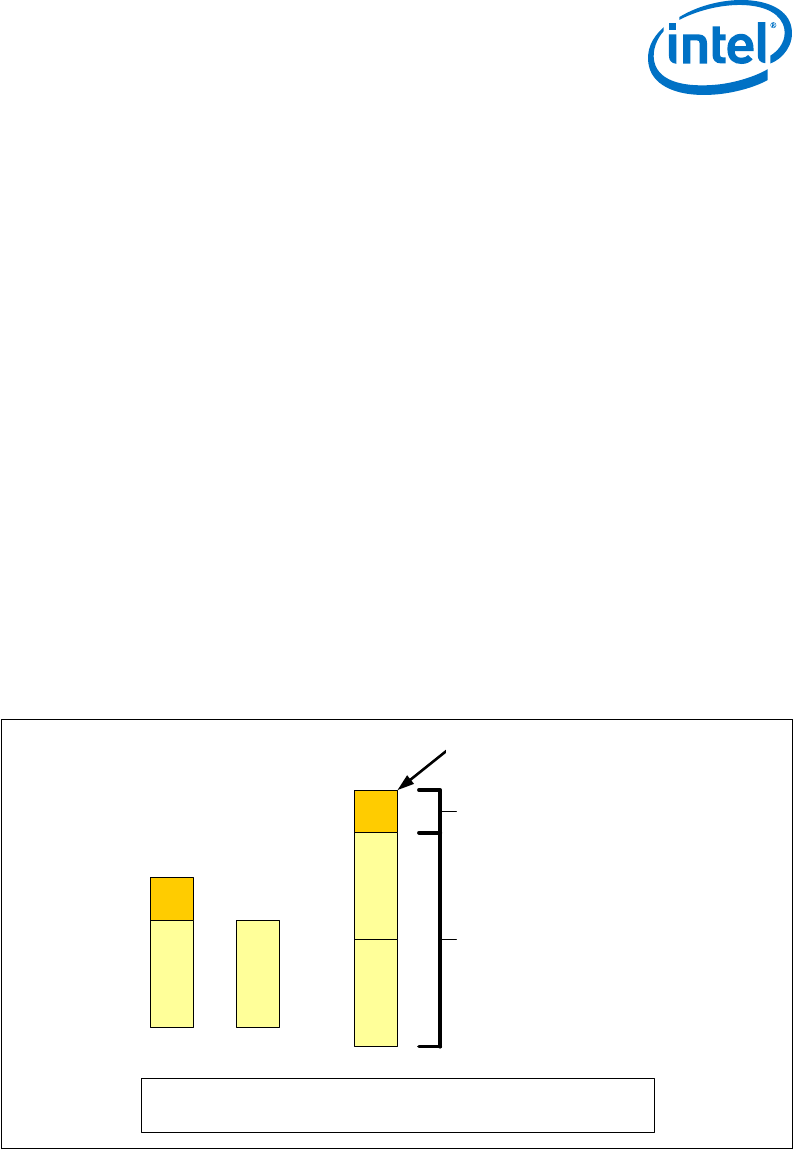
Note: System memory timing support is based on availability and is subject to change.
System Memory Organization Modes
The Integrated Memory Controller (IMC) supports two memory organization modes –
single-channel and dual-channel. Depending upon how the DIMM Modules are
populated in each memory channel, a number of different configurations can exist.
Single-Channel Mode
In this mode, all memory cycles are directed to a single-channel. Single-channel mode
is used when either Channel A or Channel B DIMM connectors are populated in any
order, but not both.
Dual-Channel Mode – Intel
®
Flex Memory Technology Mode
The IMC supports Intel Flex Memory Technology Mode. Memory is divided into
symmetric and asymmetric zones. The symmetric zone starts at the lowest address in
each channel and is contiguous until the asymmetric zone begins or until the top
address of the channel with the smaller capacity is reached. In this mode, the system
runs with one zone of dual-channel mode and one zone of single-channel mode,
simultaneously, across the whole memory array.
Note: Channels A and B can be mapped for physical channel 0 and 1 respectively or vice
versa; however, channel A size must be greater or equal to channel B size.
Figure 2. Intel
®
Flex Memory Technology Operations
CH BCH A
B B
C
B
B
C
Non interleaved
access
Dual channel
interleaved access
TOM
CH A and CH B can be configured to be physical channels 0 or 1
B – The largest physical memory amount of the smaller size memory module
C – The remaining physical memory amount of the larger size memory module
Dual-Channel Symmetric Mode
Dual-Channel Symmetric mode, also known as interleaved mode, provides maximum
performance on real world applications. Addresses are ping-ponged between the
channels after each cache line (64-byte boundary). If there are two requests, and the
second request is to an address on the opposite channel from the first, that request
can be sent before data from the first request has returned. If two consecutive cache
lines are requested, both may be retrieved simultaneously, since they are ensured to
2.1.3
Interfaces—Processor
Desktop 4th Generation Intel
®
Core
™
Processor Family, Desktop Intel
®
Pentium
®
Processor Family, and Desktop Intel
®
Celeron
®
Processor Family
December 2013 Datasheet – Volume 1 of 2
Order No.: 328897-004 21



